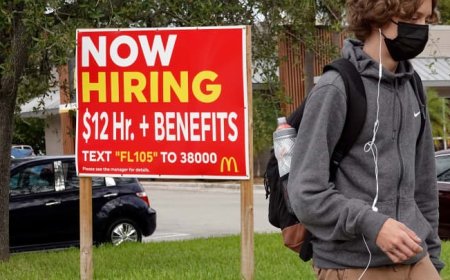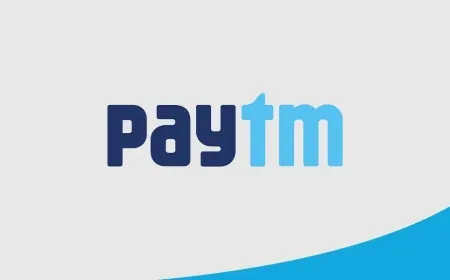Jobless Claims in the U.S. Reach Highest Level in 10 Months
Stay updated on U.S. jobless claims, reaching a 10-month high amid high interest rates. Insights on labor market trends and Federal Reserve impact.

The number of Americans applying for unemployment benefits surged to its highest level in 10 months last week, suggesting potential softening in the labor market due to elevated interest rates. Applications rose to 242,000, surpassing analysts' expectations, and the four-week average also increased, reflecting a broader trend. Despite these figures, the labor market remains historically healthy, although sustained layoffs could influence future Federal Reserve decisions.
Surge in Unemployment Claims
Last week, the number of Americans filing for jobless benefits climbed to its highest level in 10 months, indicating a potential shift in the labor market as high interest rates take their toll. According to the Labor Department, applications for unemployment benefits for the week ending June 8 increased by 13,000 to 242,000, up from 229,000 the previous week. This figure exceeded analysts' expectations of 225,000 new claims and marks the highest level since August 2023.
Trends and Analysis
The four-week average of jobless claims, which helps smooth out weekly volatility, rose to 227,000, an increase of 4,750 from the prior week and the highest since September. Weekly unemployment claims serve as a proxy for layoffs in the U.S. and provide insight into the direction of the job market. Despite the recent increase, claims remain at historically low levels since the massive job losses during the COVID-19 pandemic in spring 2020.
Implications for the Federal Reserve
While the current numbers indicate a still-healthy labor market, sustained layoffs at this level could impact Federal Reserve decisions. The Fed, which closely monitors the labor market, has raised its benchmark borrowing rate 11 times since March 2022 to combat four-decade high inflation following the COVID-19 recession. The aim was to cool a hot labor market and curb wage growth, which can drive inflation.
Economic Resilience
Economists had anticipated that rapid rate hikes might lead to a recession, but strong consumer demand and a robust labor market have so far prevented this. Although a report on Wednesday showed consumer inflation easing slightly last month, the Federal Reserve maintained its benchmark lending rate at a 23-year high. Fed Chair Jerome Powell indicated that more evidence is needed to confirm that price increases are moving towards the 2% target.
Employment and Job Market Trends
In May, U.S. employers added 272,000 jobs, up from April, signaling continued confidence in the economy despite high interest rates. However, the recent government report hinted at a possible slowdown, with the unemployment rate rising for the second consecutive month to 4%, ending a 27-month streak of unemployment below this threshold, the longest since the late 1960s.
Additionally, job openings fell to 8.1 million in April, the lowest since 2021. Although layoffs remain relatively low, several high-profile companies, particularly in the tech and media sectors, have announced job cuts. Companies like Google parent Alphabet, Apple, eBay, Walmart, Peloton, Stellantis, Nike, and Tesla have recently reported layoffs.
Increasing Unemployment Benefits
As of the week ending June 1, a total of 1.82 million people were collecting jobless benefits, an increase of 30,000, marking the highest number since early this year. This rise in unemployment benefits underscores the potential challenges facing the labor market amid ongoing economic uncertainties.
Also Read: Turning 50 and Worried About Retirement? Here's How to Build a Million-Dollar Nest Egg!





























































